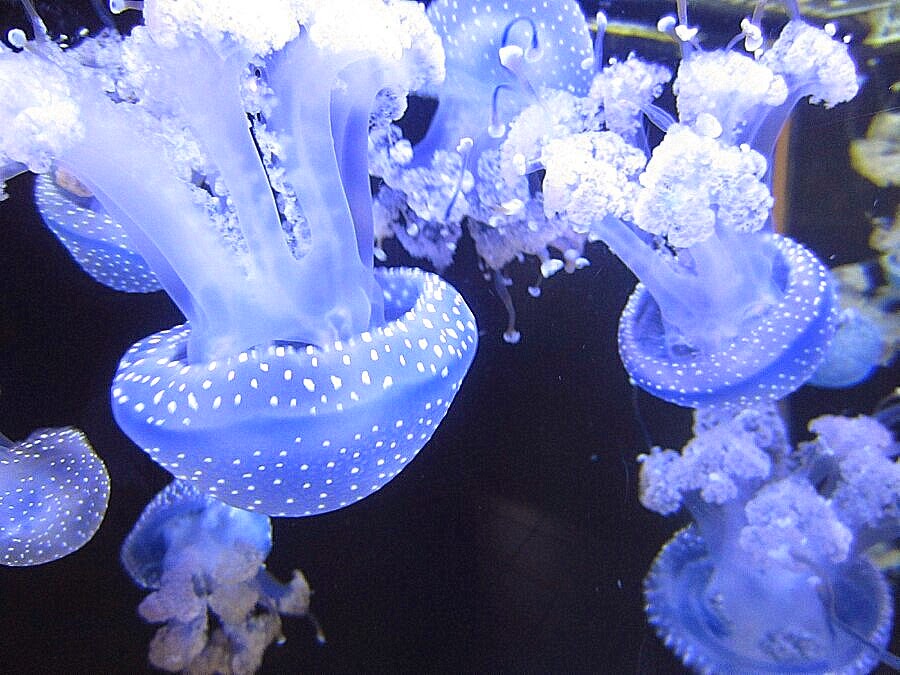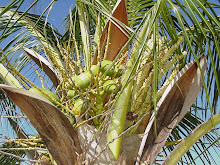As Living History Docents for the county, The Colonel and I are learning so much about the history of our county.
One of our docent duties has been to give tours of the "Cookie House". The Cookie House is the only remaining building left of the Bass Biological Laboratory and Zoological Research Supply Company.
The Bass Lab was founded in 1931 by Chicago natives, John Foster Bass, Jr. and his wife Else. The Bass Lab was located on ten acres of land in Englewood, Florida that was owned by Mr. and Mrs. Bass. The lab was the first full-time marine station on Florida's mainland. It provided a research facility for studies into biological fields of fauna, flora and climate. Mr. Bass established the lab in honor of his father.
The lab operated for thirteen years (1931-1944). It was an intellectual outpost on Florida's west coast during the 1930s. Renowned scientist came from North America and Europe. They collected specimens and wrote reports. Over 470 maritime and terrestrial creatures were discovered by these scientists while at Bass Lab. They had to pay one dollar a day for research and two dollars a day for research
and boarding while at the lab.
Willis Gertsch, an arachnologist who once worked at Bass Lab, was contacted by
Charlotte's Web author, E.B. White. White consulted Gertsch before his book was published to inquire about a spider he had observed. Gertsch told him it was a Barn Spider (Araneus Cavaticus). Charlotte's full name in the book is Charlotte A. Cavatica.
The Bass Lab also operated a profit-making enterprise, Biological Research Supply Company. This company supplied other labs and universities throughout the country with biological specimens for analysis and dissection. Bass Lab also got revenue from Genuine Shark Products through the sale of teeth jewelry, shark liver oil and other shark commodities.
(above black and white photos are from Mote Marine Archives)
The Cookie House, built in 1931, was named so, because the round, brown logs that were embedded in white mortar, looked like cookies on a white plate. The "stove wood" construction consisted of wood discs cut from lighter pine that were stacked on their edges and filled with mortar made from beach sand.
Stove wood construction is rare in the United States. Other examples can be found in Wisconsin and Colorado. In Wisconsin, the construction technique is attributed to Norwegian, Finnish, German and Polish settlements. The Cookie House is the only one of its type in Florida.
The Cookie House was originally an office and workshop for Mr. Bass. It is 12-foot by 24-foot. There are two rooms in the house. It was moved to its current location, the Cedar Point Environmental Park in Englewood, Florida, in 2006. It took $60,000 to stabilize and renovate and was finally opened for tours in January of this year.
The Colonel was one of the docents who gave the tours inside the Cookie House. I was outside, asking for donations for the restoration of another historical building we hope to open up to the public in the future. I also gave away free cookies.
The Colonel and I helped set up the displays in the Cookie House. That was fun.
The success of the Bass Lab inspired the Cape Haze Marine Lab founded by Bill and Anne Vanderbilt. The Vanderbilts helped Dr. Eugenie Clark, aka,
The Shark Lady, to establish Mote Marine Laboratory and Aquarium in 1950, using many of Bass Lab's research materials.
In 1978, Mote Marine moved to Sarasota. Its library holds all of Bass Lab's archives today. Mote Marine's website says, from their humble beginnings in a tiny shed in a small Florida town, they have become an independent marine research institute of world-class marine scientists committed to conservation and sustainable use of our oceans.
Originally a shark center, now they study manatees, dolphins, sea turtles and coral reefs.
The ocean is their passion!
Recently, The Colonel and I visited Mote Marine. It was a beautiful Saturday and quite a few others (with several small children in tow) had the same idea as we did.
After we paid for our tickets we turned right and entered a large room filled with tanks and in these tanks were all kinds of sea life.
(Sturgeon, where caviar originates)
(Cuttlefish)
(Can you see the Flounder?)
(These guys were cute. Can't recall their name)
(One ugly fish!)
(Looks like the Pipe Fish is on some macaroni and cheese doesn't it?)
(Pretty Sea Dragons)
We saw several Seahorses. The tiny babies were amazing. They used little zip-ties as anchors to hold onto.
We also saw extremely tiny, baby jellyfish. Those tiny, white specks are jellyfish too.
Our next stop was the shark tank. There was a huge, stuffed Great Hammerhead Shark hanging at the tank's entrance.
(Tarpon and shark)
(This picture was interesting. It showed actual photos of the same man next to real sharks. There is a 12-inch ruler by each shark's belly. The size differences were incredible)
(This was a mural of a Megalodon, a prehistoric shark. Notice the scuba diver near his tail. He was GINORMOUS!!)
Next we saw and got to touch some Rays in a tank. They were pretty.
We stopped and had lunch at the diner in the Mote Marine building. We ate somewhat early and thank God we did, it was a tiny diner. We finished our lunch as it started getting busy and crowded.
After lunch we had to leave the main building and take a little walk to another building. This building housed the Sea Turtles and Manatees.
(The turtle skeleton was interesting)
(So was the Manatee skeleton)

It was feeding time for the Manatees. There was an underwater microphone in their tank and you could hear them munching on their lettuce leaves.
We then visited the gift shop and bought a few items. We got books for our nieces and nephews in Iowa and I just had to have this cool, tentacle pen.
Some of the most interesting things we saw were the baby sharks and rays. Here you see two baby rays and their egg casings. One of the baby rays still has its yolk sack attached.
Here is an embryo shark inside its egg. There was back lighting so we could see the baby shark. It wriggled many times as we watched it.
This baby shark is the kind that was inside the egg. I cannot remember the name of the type of shark.
There was a lovely walking path on the Mote Marine grounds. The water was very pretty on the day we were there.
We had a very lovely day while visiting Mote Marine. Even though Mote Marine is not located in our county, its beginnings and history have roots there.


























































































